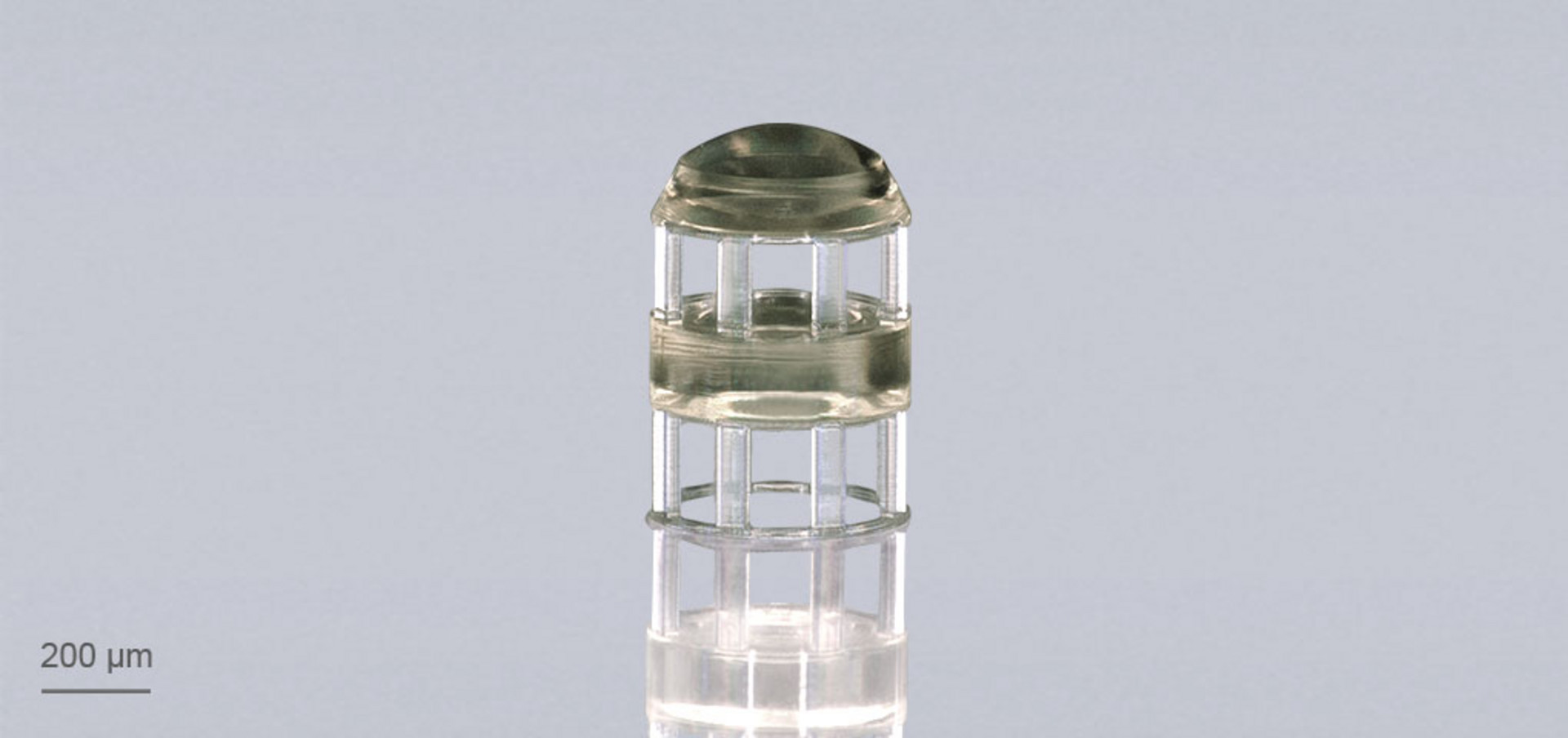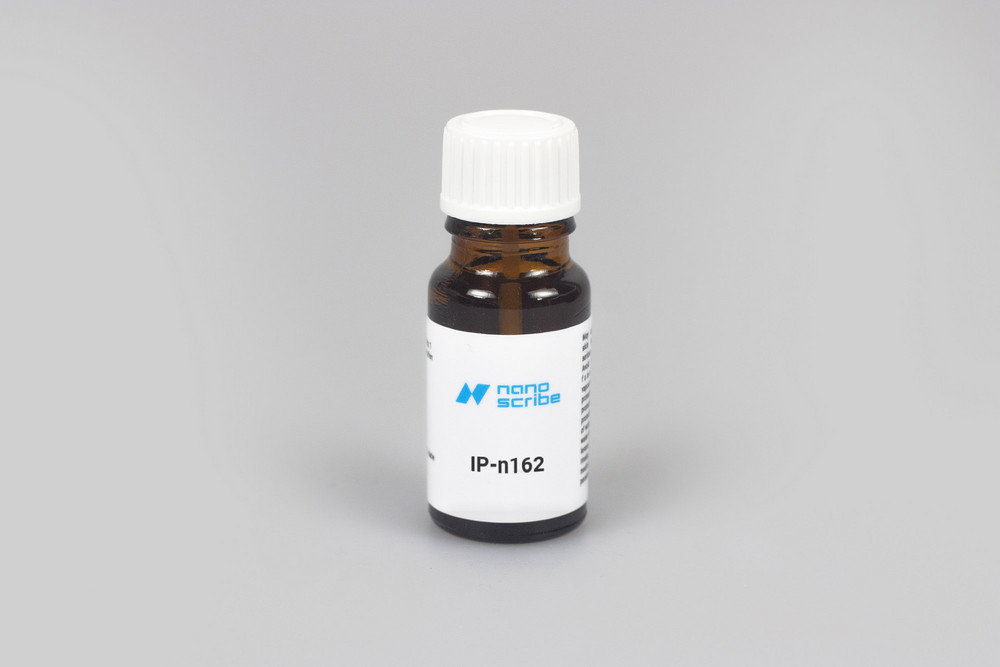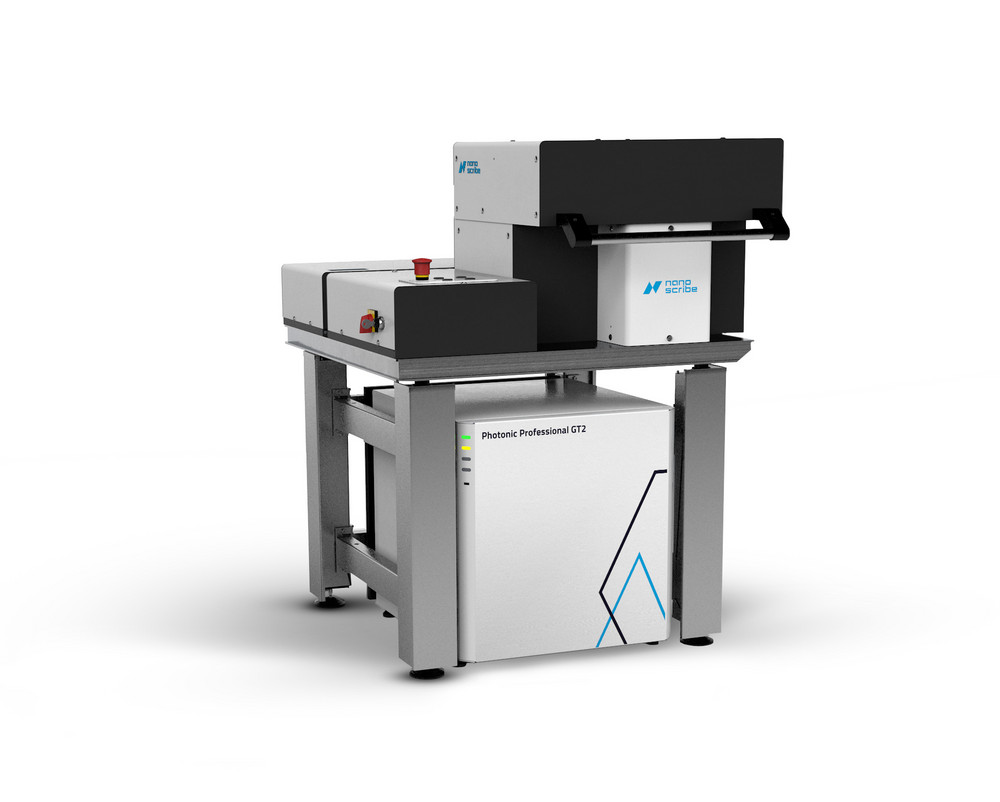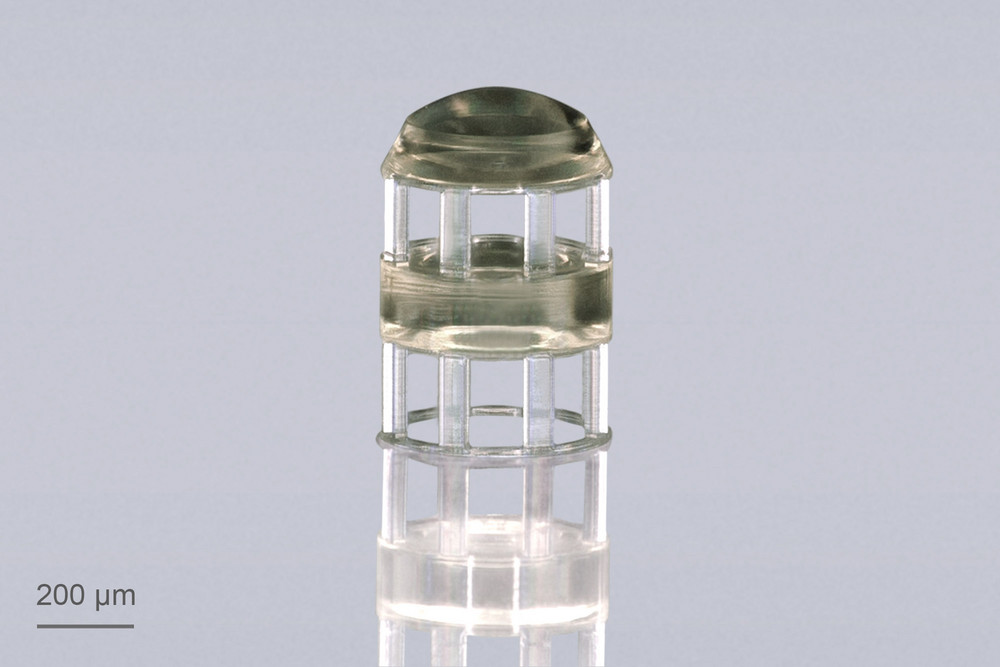3D Microfabrication drives a new era of freeform microoptics
“A high refractive index photoresin like IP-n162 gives the designer additional freedom to create lenses that are more powerful, thinner, less curved, more compact and that can be also 3D-printed faster and cheaper” states Simon Thiele, project participant of the BMBF funded project PRINTOPTICS and CTO of the spin-off company of the same name. In this project, Nanoscribe is partnering with the University of Stuttgart and the medical technology company Karl Storz in the printing of miniature optics on fibers for endoscopy applications. “The most powerful design I realized with IP-n162 was a complex optical system consisting of two lenses with complete freeform surfaces to achieve a distortion-free image. A special feature is the integrated diffractive lens containing fine stair-structures on the top of the lens to correct the color error,” says Thiele about his experiences with the new photoresin. “The high refractive index of IP-n162 helps to make these steps smaller and to reduce stray light”, Thiele summarizes the advantages of IP-n162.
About Nanoscribe
The medium-sized company develops and produces 3D printers and maskless lithography systems for microfabrication as well as specially developed printing materials and application-specific solution sets. The specialist for additive manufacturing of high-precision structures and objects on the nano-, micro- and mesoscale was founded in 2007 as a spin-off of the Karlsruhe Institute of Technology (KIT). With the Carl Zeiss AG (ZEISS), Nanoscribe has a strong partner and investor at its side. Today, with more than 70 employees and subsidiaries in China and the USA, Nanoscribe has become the market and technology leader. More than 2,000 users and operators at top universities and innovative industrial companies worldwide benefit from the groundbreaking technology and application tailored solutions for 3D Microfabrication.
Captions
Img. 1: Compound lens system with two refractive elements printed with Nanoscribe’s IP-n162 photoresin. The novel printing material has a high refractive index of 1.62, which expands the opportunities in creating innovative miniaturized optical systems. Printed by Nanoscribe, optical design: Simon Thiele, TTI GmbH TGU Printoptics, Stuttgart.
Img. 2: Nanoscribe presents the new IP-n162 printing material for microoptics applications
Img. 3: Nanoscribe’s Photonic Professional GT2 is the world’s highest resolution 3D printer. With the flexibility in design and a wide range of available materials it is an ideal instrument for science and prototyping in multi-user facilities and research laboratories.
Right of use and media relations
Our images may be used free of charge for editorial purposes. Please state the source as follows: "Image: Nanoscribe". The images must not be used for commercial purposes or passed on to third parties.
In case of questions or if you would like to be added to our press mailing list, please do not hesitate to contact Alena Kirchenbauer, media@nanoscribe.com.
Stay up to date with our latest press releases about Nanoscribe and the world of 3D Microfabrication. Directly get in touch with us to discuss further press activities: Media relations





